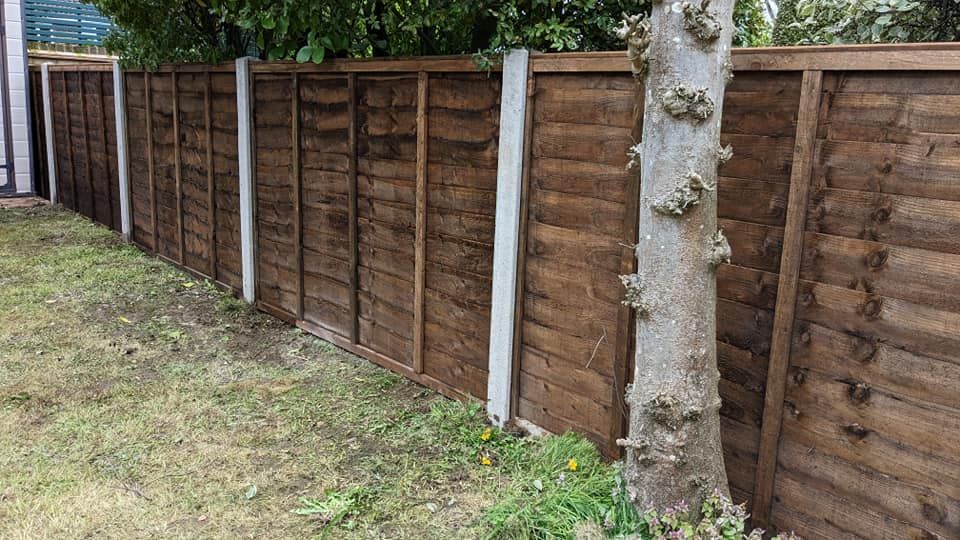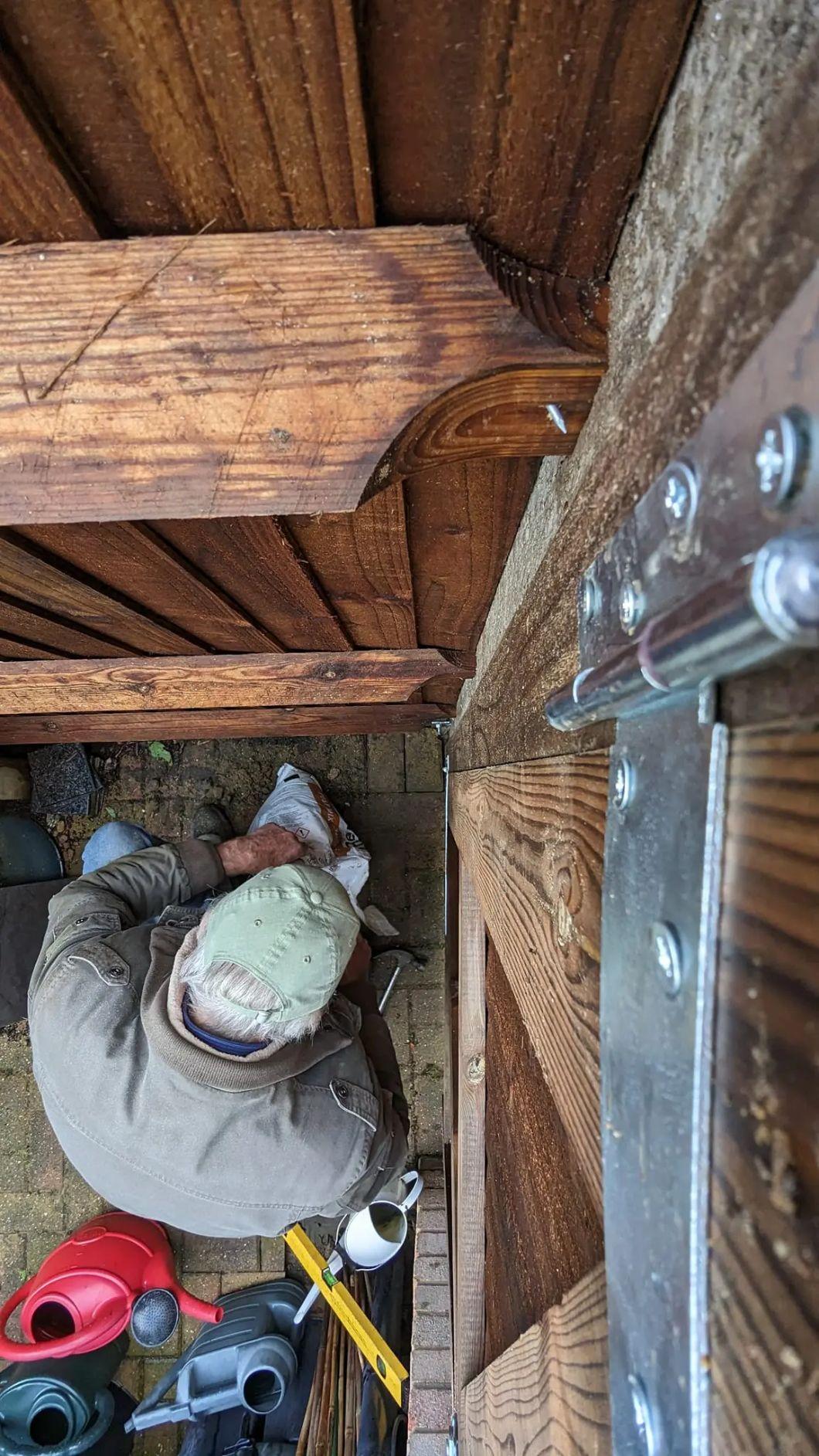Do I Own the Left or Right Side of the Fence?
Sheridan fencing - Dave Relf
Which Side of the Fence Do I Own – Left or Right?
Determining fence ownership can often be confusing, but there are a few ways to figure it out, including checking your title deeds and inspecting the fence itself. Here’s a guide to help you understand which side of the fence you might own, Left Or Right?
Determine Ownership with Title Deeds
The most accurate way to determine which side of the fence you own is by checking your house’s title deeds. These documents are typically included in the paperwork you received when purchasing your home. If you’ve misplaced them, your solicitor, who handled the conveyancing, may be able to provide you with a copy. Alternatively, you can check with the Land Registry.
When reviewing the plans, ownership is generally indicated by a “T” mark on the boundary line. The "T" will point to the side that is your responsibility. If you see an "H" (two joined “Ts”), this indicates a party fence, meaning the boundary is shared with your neighbour. In such cases, both parties are responsible for the fence, and it’s advisable to discuss maintenance arrangements. You might decide to take turns maintaining the fence or split any costs equally.
If you prefer to have complete ownership of a shared fence, there is a legal process you can follow to buy out your neighbour’s share. However, this must be done through a formal, legally recorded sale.
Determining Fence Ownership by Inspection
At Sheridan Fencing, we often recommend that homeowners give their neighbours the better-looking side of the fence out of courtesy. However, it's important to note that you are not legally obligated to do so. If you can’t access your title deeds or if they don’t clearly indicate ownership, examining your fence can provide clues. Typically, if you have the back view of the fence—with visible posts or support rails—it suggests that you own that side.
- Close-Board Fencing: If you have close-board fencing, you will see the arris rails (the horizontal supporting rails) on your side, which usually indicates the fence belongs to you.
- Picket Fencing: Similarly, with picket fencing, the side with the posts and rails will be on your side if it’s your fence.
- Close-Board Panels: With these types of panels, you’ll typically see 3 to 4 vertical rails at the back, which suggests ownership of that fence.
- Waney Lap Panels: These panels have horizontal, partially overlapped boards. If the boards appear to face upwards on your side, it’s likely your fence.
- Decorative Panels: These can be tricky, as they often look the same on both sides. In this case, other methods of determining ownership, such as checking the deeds, will be more useful.
Closeboarding Back View

Picket Fence Back View

Closeboard Panel Back view

Back View of Waney Lap Panel

Conclusion
Determining whether you own the left or right side of the fence doesn’t have to be a mystery. By checking your title deeds or simply inspecting the structure of the fence, you can often establish ownership. If your fence shows the supporting rails or posts on your side, it's likely yours. However, shared fences require communication and cooperation with your neighbour. Either way, understanding your responsibility helps avoid disputes and ensures proper maintenance. For any further clarification or professional fencing advice, Sheridan Fencing is always here to help!
Left or Right: Which Side of the Fence is Yours? (FAQ)
1. How do I find out which side of the fence I own?
Check your title deeds for a “T” mark indicating ownership. If unclear, inspect the fence itself—rails or posts on your side often suggest it's your responsibility.
2. What if the fence is shared with my neighbour?
If your title deeds show an “H” or the fence structure suggests shared ownership, it’s best to discuss maintenance with your neighbour. You can either take turns or split the costs equally.
3. Can I change a shared fence on my own?
No, you’ll need to agree with your neighbour before making any changes to a shared fence. If you want full ownership, you can legally buy out their share with proper documentation.
4. What should I do if my neighbour disagrees about the fence ownership?
In cases of disagreement, refer to your title deeds or consult the Land Registry for clarification. If the dispute persists, it may be helpful to seek legal advice.
5. Does the ‘best side’ of the fence always face the neighbour?
While it’s common practice to give your neighbour the best side of the fence, this isn’t a legal requirement. Fence ownership is determined by deeds or structure, not which side faces outwards.
6. Can I replace my fence without my neighbour's permission?
If the fence belongs to you (as indicated by your title deeds or the structure), you have the right to replace it. However, if it’s shared, you’ll need to discuss any changes with your neighbour first.
7. What if the fence is damaged? Who is responsible for repairs?
If the fence belongs to you, you're responsible for repairs. For shared fences, both you and your neighbour are equally responsible. It’s best to communicate and agree on how to handle the repairs.
8. Can my neighbour put things on my fence?
If the fence is entirely on your property, your neighbour should not attach items to it without your permission. If it’s a shared fence, discuss and agree before adding anything to avoid disputes.
9. What happens if my neighbour refuses to pay for shared fence maintenance?
If your neighbour is legally responsible for part of the fence, but refuses to contribute, you may need to seek legal advice. However, it’s always better to attempt a polite conversation or negotiation first.



